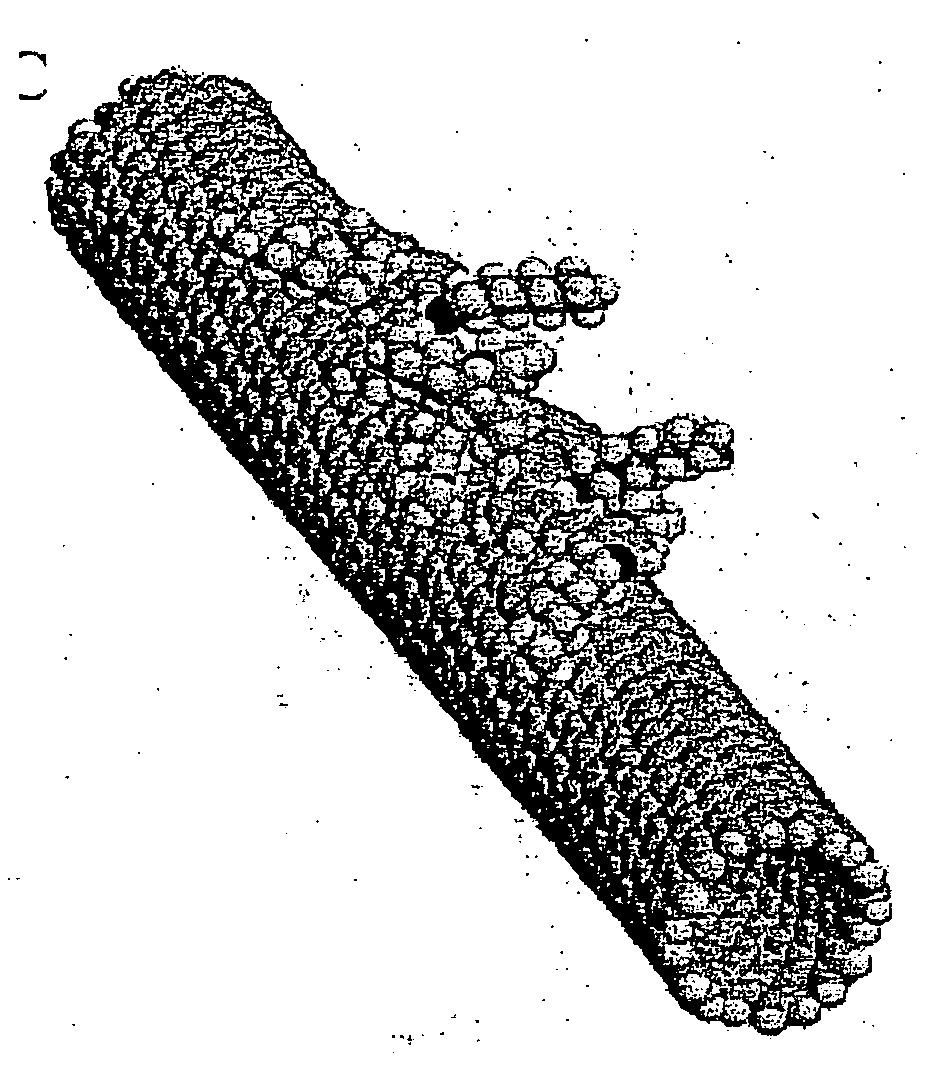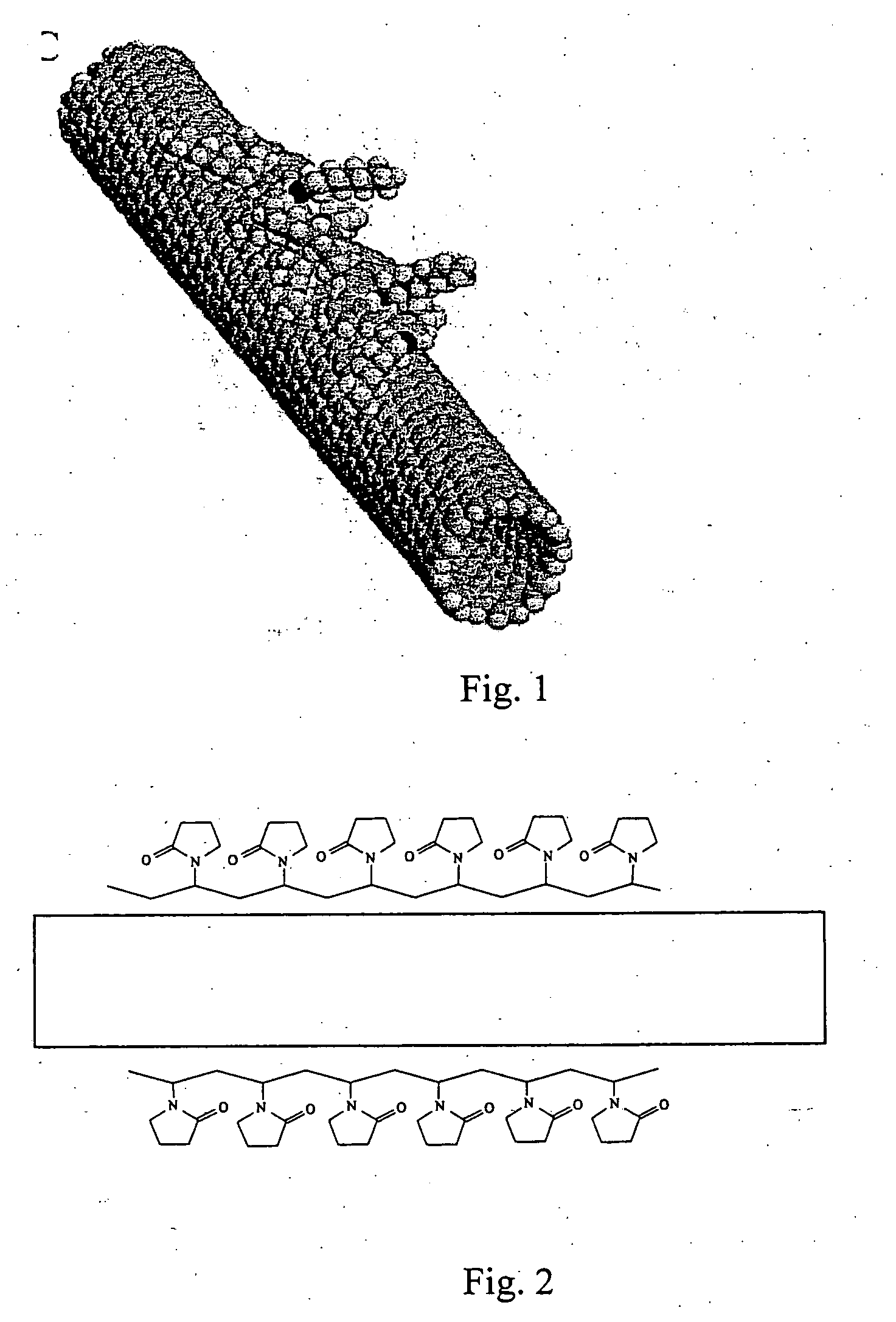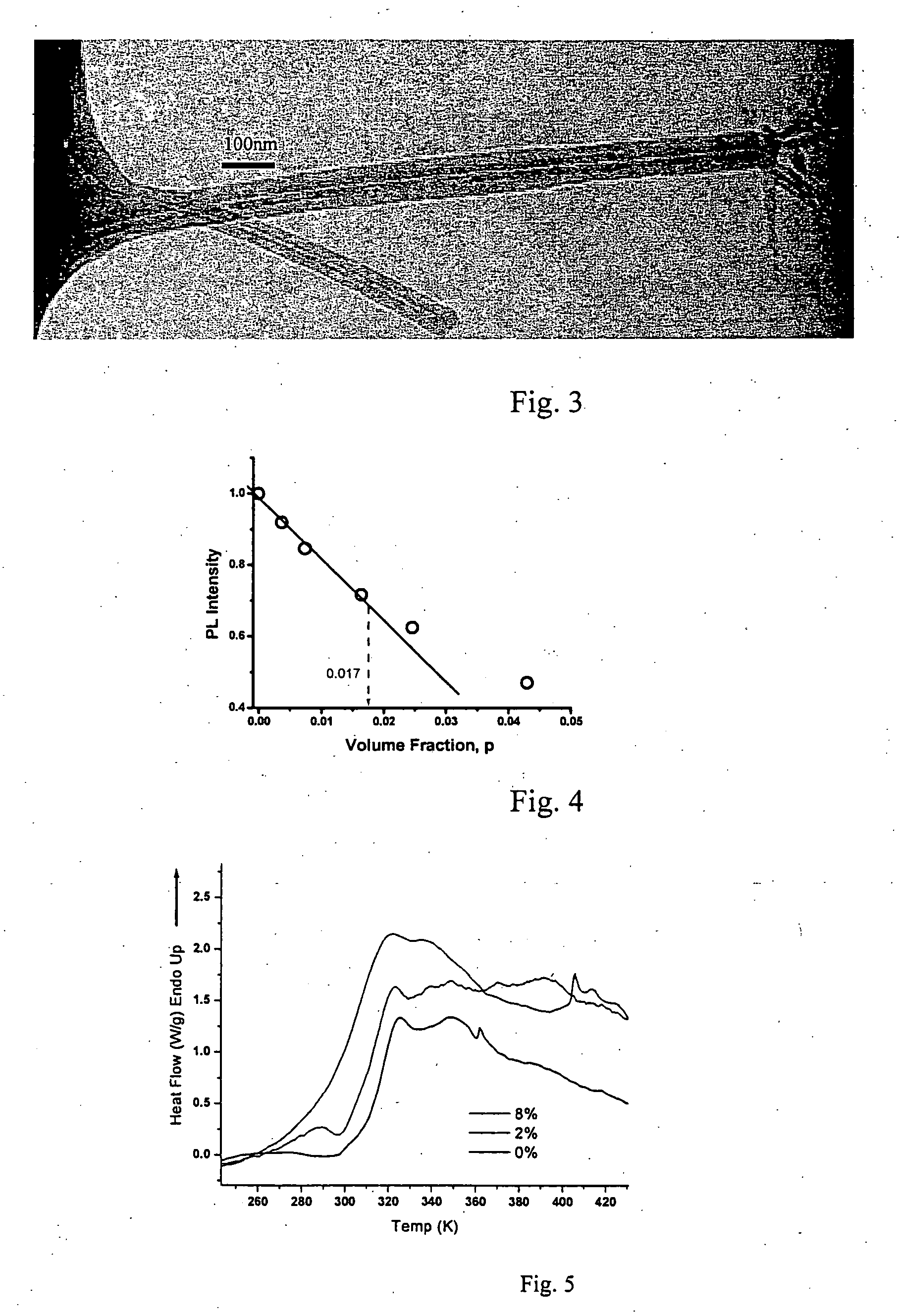Product
- Summary
- Abstract
- Description
- Claims
- Application Information
AI Technical Summary
Benefits of technology
Problems solved by technology
Method used
Image
Examples
example 1
[0086]The polymer used in this example is a variation on poly(para-phenylenevinylene) (PPV). The polymer was prepared by a Homer reaction between isophthalaldehyde and 2,5-dioctoxy-1,5bis (diethylmethylphosphonyl) benzene and is described in detail elsewhere (4) Alternate meta-phenylene linkages lead to an interruption of conjugation along the polymer backbone. Its flexible backbone and dimensions make it ideal for coating carbon nanotubes.
[0087]To initiate the interaction between the polymer and arc-grown single walled CNTs (SWNT) a solution of 20 g / L of PmPV in toluene is first prepared. SWNTs, (2% by weight), are added to form a composite solution of PmPV and SWNT in toluene. To bring the nanotubes and polymer into more intimate contact, this mixture was ultrasonicated at low power for several hours. When complete, the solution was black and appeared homogeneous with little precipitate. The solution was then allowed to settle for several days and the supernatant was then decanted...
example 2
[0088]In order to bypass impurity problems such as catalytical particles or amorphous and turbostratic graphite a method optimized by Murphy et al (6) was used for non destructive purification of the different nanotube samples. As a matrix material, polyvinyl alcohol (PVA) was chosen. PVA is soluble in water and was mixed in a concentration of 30 g / L using an ultra high power sonic tip for 1 min.
[0089]As reinforcing agents two different Multi-walled CNTs (MWNT) were used (N-MWNT's s and O-MWNT's). N-MWNT's show an average diameter of 14 nm and lengths of approximately 50 μm. They were pre-purified by oxidation. O-MWNT were measured to have an average diameter of 16 nm and lengths of up to 1-5 μm10 O-MWNT's were pre-purified by acid treatment in HCL. For comparison arc grown aMWNT's having an average diameter of 25 nm and an average length of 1 μm were used. The purity of the raw material was 30-40%. HipCo-SWNT's purchased from CNI (Carbon Nanotechnologies Incorporated) are known to ...
example 3
[0102]The polymers used in this study were polyvinyl alcohol, PVA and poly˜9-vinyl carbazole, PVK. These materials were purchased from Aldrich and used as supplied. A range of composite solutions were prepared by adding arc discharge MWNT soot, produced in TCD, to 30 g / 1 solutions of PVA and PVK in their respective solvents, de-ionized water and dichloromethane. True nanotube mass fractions were measured by thermogravimetric analysis Mettler TA 4000 and were found to range between 0.1 and 1 wt % for PVA and 1.5 and 8 wt % for PVK. Films were formed on glass substrates by drop casting for PVA composites and spinning multiple layers in the case of PVK. Film thicknesses were measured by white light interferometry and were greater than one micron in all cases. Both DSC TA Instruments DSC-2920 and thermogravimetric analysis measurements were carried out on free standing films with special care being taken to remove environmental moisture. In both cases the scan rate was 10 K / min. To perf...
PUM
| Property | Measurement | Unit |
|---|---|---|
| Pressure | aaaaa | aaaaa |
| Pressure | aaaaa | aaaaa |
| Pressure | aaaaa | aaaaa |
Abstract
Description
Claims
Application Information
 Login to View More
Login to View More - R&D
- Intellectual Property
- Life Sciences
- Materials
- Tech Scout
- Unparalleled Data Quality
- Higher Quality Content
- 60% Fewer Hallucinations
Browse by: Latest US Patents, China's latest patents, Technical Efficacy Thesaurus, Application Domain, Technology Topic, Popular Technical Reports.
© 2025 PatSnap. All rights reserved.Legal|Privacy policy|Modern Slavery Act Transparency Statement|Sitemap|About US| Contact US: help@patsnap.com



